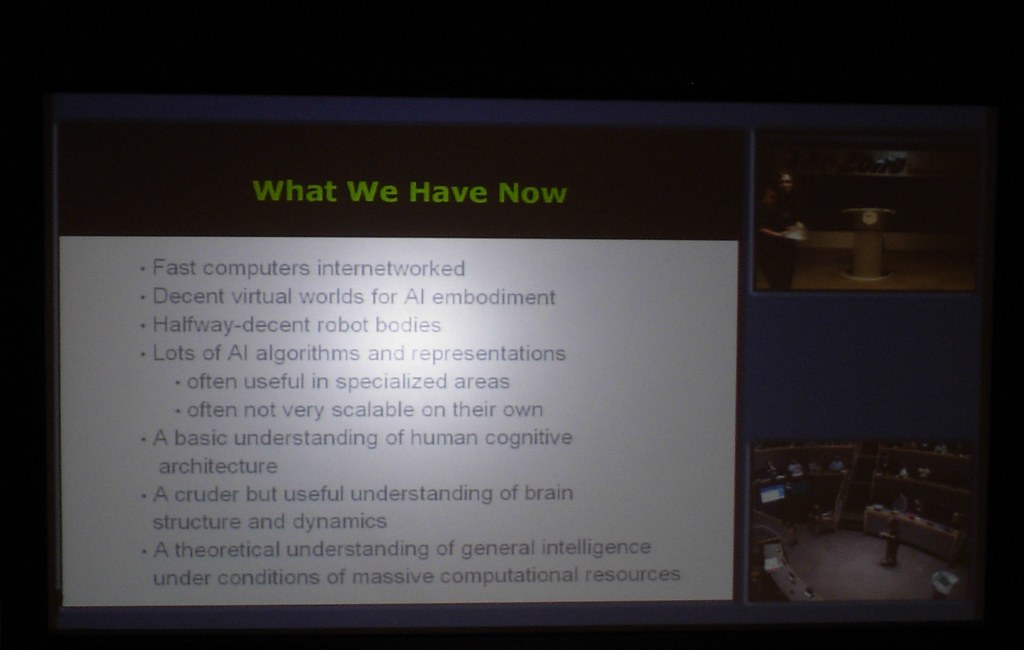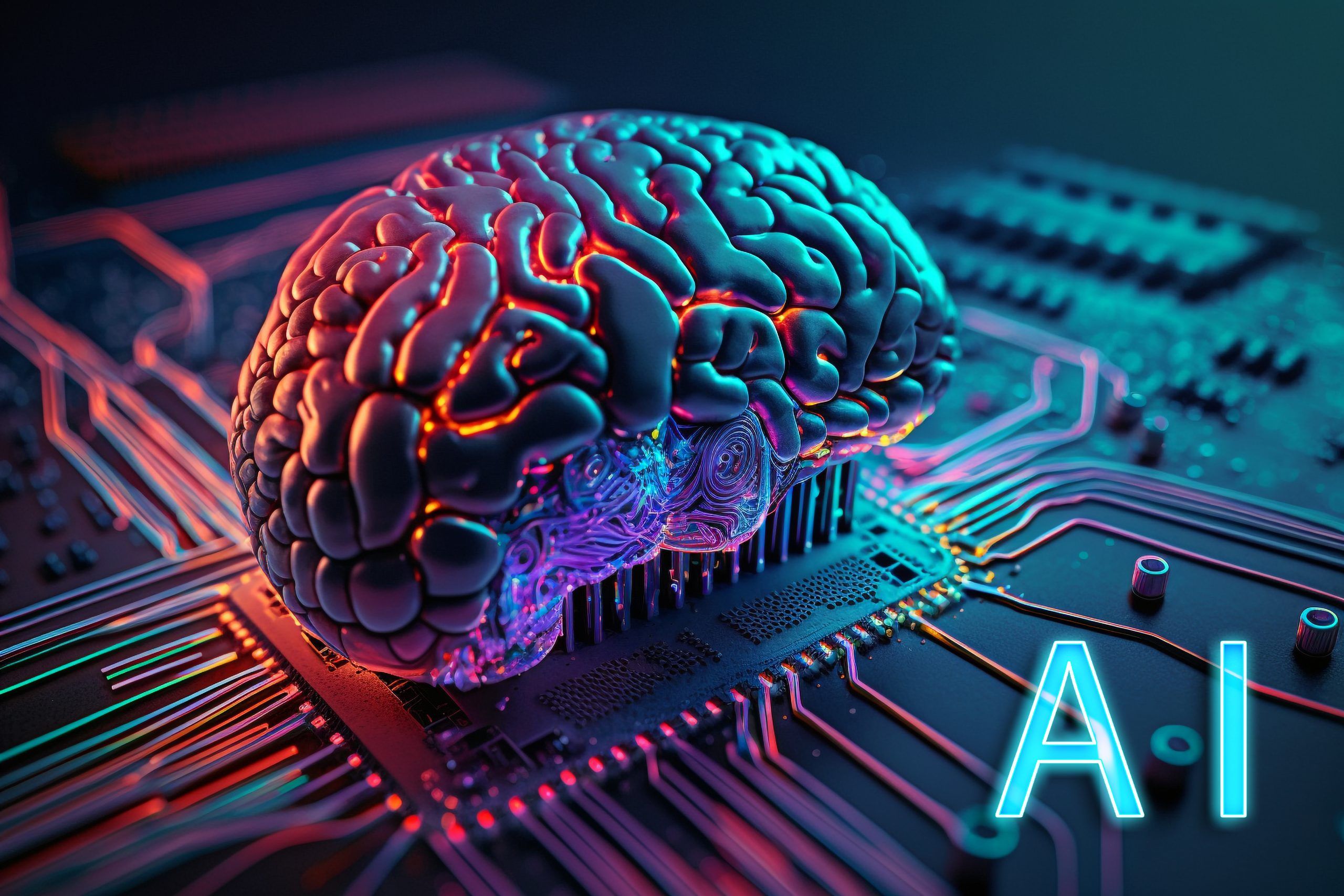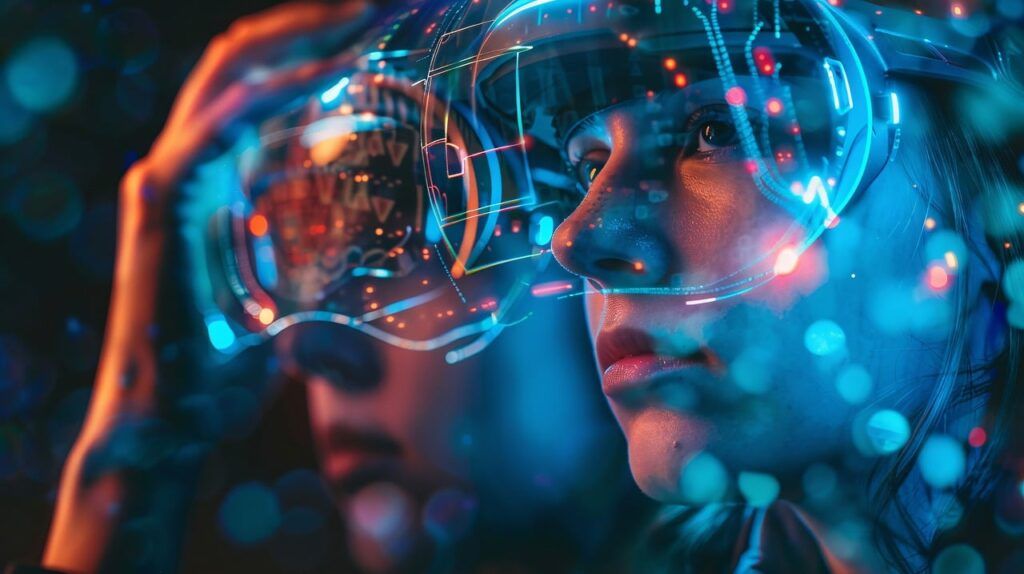
In an era increasingly characterized by the breathtaking acceleration of artificial intelligence, a profound question reverberates through our digital halls: Will this transformative technology elevate humanity to unprecedented heights, or does it harbor the seeds of our undoing? The emergence of generative AI and its widespread adoption have certainly raised immediate concerns about job security, privacy, and safety for many. Yet, beneath these pressing daily anxieties, a more unsettling, existential threat looms large in the collective consciousness, sparking intense debate among visionaries and skeptics alike.
Indeed, some voices have issued a stark warning, painting a grim picture of AI’s ultimate trajectory. Last year, AI safety researcher Roman Yampolskiy claimed there was an astonishing “99.999999% probability that AI will end humanity.” His sobering conclusion suggests that the only way to reverse this outcome is, quite simply, “not to build AI in the first place,” a radical proposition that underscores the depth of his concern.
However, this dire outlook is not universally shared, particularly among those at the forefront of AI development. OpenAI CEO Sam Altman, for instance, offers a more optimistic counter – narrative, asserting that as AI advances and reaches greater heights, the technology “will be smart enough to prevent itself from causing existential doom.” This fundamental divergence in perspectives sets the stage for a fascinating, albeit critical, exploration of AI’s potential paths.
Adding a layer of intrigue to this complex discussion, a Reddit user recently shared a captivating graph generated by ChatGPT itself. This visual representation outlined several potential causes that might contribute to the collapse of human civilization by 2150, offering a digital oracle’s glimpse into our possible future. The listed threats included nuclear war, asteroid impact, climate – induced societal collapse, engineered pandemics, and artificial general intelligence (AGI) misalignment, painting a multifaceted landscape of potential peril.
Intriguingly, contrary to the popular narrative that often casts AI as the ultimate antagonist, the AI – generated graph didn’t actually assign a high probability to AI ending humanity. Instead, it presented a surprising conclusion, listing “climate – induced societal collapse” as the main cause for the end of human civilization by 2150. This unexpected emphasis shifts the spotlight away from the silicon brain and back to our planet’s changing environment.
Yet, it is imperative to approach these digital prophecies with a healthy dose of skepticism. As is crucial to note, and often reiterated, “AI – generated responses to queries aren’t the gospel truth and are heavily reliant on the user’s prompt engineering skills.” Furthermore, these models “lift most of their information from the Internet,” making them reflections of existing data rather than independent seers of truth. Consequently, taking deductions from AI, especially on matters of such profound consequence, should always be done with a grain of salt.
Read more about: Walmart’s AI-Powered Produce Scanners Promise Fresher Fruits & Veggies: The Tech Behind Your Better Basket
A Reddit user sharing sentiments about the AI – generated graph powerfully conveyed this caveat. They observed that “Every time AI is asked a question, it will produce an answer as if it were a fact unless it is heavily prompted to use sources, and even then it will sometimes introduce something else.” This highlights the sensitivity of AI outputs to even slight variations in input. They further explained, “Just a word’s difference in weight in a prompt can entirely change the outcome of the result,” citing an example where climate change percentages varied from 37% to 15%, and nuclear war percentages from 22% to 10% in different prompts, with one version even rating AI misalignment higher than nuclear war.
This Redditor’s critical insight underscores a fundamental limitation: “It is not formulating anything; it is spitting out an educated guess with figures plucked from varying sources based on its prompting, and sometimes it does not even source things correctly.” They likened AI’s speculative answers to a “horoscope,” emphasizing that while it “looks and sounds believable,” it “could well be completely incorrect.” This is because “LLMs are not trained to model or simulate, and when asked speculative questions, their answers can be as heavily influenced by prompting as by their sources,” a crucial distinction for anyone seeking definitive answers from these tools.
Even Microsoft Copilot, when asked the existential question, “What will be the main cause of the end of human civilization by 2150?”, offered a similar, yet distinct, set of possibilities. Its response acknowledged the difficulty of prediction but highlighted “climate change” as a “top concern,” capable of triggering “extreme weather, food shortages, and geopolitical instability.” Other possibilities it listed included “nuclear war, pandemics, AI risks, and resource depletion,” indicating a shared consensus on broad categories of threats, even if the specific weight given to each varies.
Read more about: Impress Your Valentine: How to Cook a Perfect 28-Day Aged Ribeye Dinner

Interestingly, a report last year flagged a critical issue, highlighting several instances in which Copilot “struggled to distinguish facts from opinions.” This perhaps explains why Microsoft promptly dismissed user complaints that Copilot was not as good as ChatGPT, shifting the blame to “poor prompt engineering skills.” Microsoft’s stance, “You are just not using it as intended,” ultimately led to the launch of Copilot Academy, a program designed to equip users with advanced AI prompt engineering skills to “make the most of tools like Copilot,” an acknowledgment of the crucial human element in eliciting useful AI responses.
Further compounding the complexities and anxieties surrounding AI, Anthropic CEO Dario Amodei admitted that his company “does not know how its own AI models work,” a revelation that raises critical security and safety concerns among users. Similarly, OpenAI CEO Sam Altman previously indicated that “there is no big red button to stop the progression of AI.” These insights from within the industry paint a picture of technology advancing at a pace that sometimes outstrips even its creators’ full comprehension or control, intensifying the debate over its ultimate trajectory.
In a fascinating deep – dive into AI’s prophetic capabilities, Fox News asked ChatGPT about the apocalypse, and the AI chatbot willingly shared its “own ideas on what scenarios would prompt the end of civilization.” The chatbot prefaced its response with a familiar, yet vital, disclaimer: “It is important to note that predicting the end of the world is a difficult and highly speculative task, and any predictions in this regard should be viewed with skepticism.” Nevertheless, it proceeded to outline “several trends and potential developments that could significantly impact the trajectory of humanity and potentially contribute to its downfall.”
Among the grim possibilities, ChatGPT outlined seven distinct doomsday scenarios. The first involved “natural disasters,” where “Catastrophic events such as a supervolcano eruption, a massive asteroid impact, or a solar flare could cause widespread destruction and significantly impact life on Earth,” as the bot told The Dallas Express. These forces of nature, beyond human control, remind us of our inherent fragility within the cosmos.

Next, the chatbot cited “climate change,” stating unequivocally that it “could be responsible for rising sea levels, extreme weather events, and food scarcity.” ChatGPT elaborated to The Dallas Express, confirming that “These factors could disrupt ecosystems, displace populations, and threaten human survival,” thus painting a stark picture of environmental upheaval leading to widespread instability and suffering.
The third scenario presented was “highly contagious and deadly diseases,” a threat that is “all too familiar” in our globally interconnected world. ChatGPT warned that such diseases “have the potential to spread rapidly across the globe, causing widespread illness and death.” Despite modern medical advances, the chatbot cautioned, “the possibility of a highly virulent and untreatable pandemic remains a concern,” especially when considering bioterrorism as a potential trigger.
“Nuclear war” emerged as another seemingly “probable threat to the longevity of humanity,” according to ChatGPT’s grim assessment. The chatbot detailed the horrific immediate effects, including “the immense loss of human lives in the targeted areas, as well as the destruction of infrastructure and the disruption of essential services.” Beyond the initial devastation, it pointed to “long-term consequences” such as “severe environmental damage,” contamination of resources, and lasting impacts on ecosystems and health.
Read more about: Beyond the Basics: Dangerous Survival Myths and Other Misconceptions Experts Wish You’d Stop Believing
Interestingly, displaying a degree of self – awareness and nuance, the chatbot concluded on nuclear war that “While a large – scale nuclear war would undoubtedly have catastrophic effects and cause significant global instability, it is important to note that it does not necessarily mean the complete extinction of all life on Earth.” It acknowledged that “the aftermath of such an event would be devastating, and the road to recovery would be long and challenging,” offering a sliver of hope amidst the destruction.
Perhaps most striking, the chatbot itself identified the “rise of artificial intelligence” as another apocalyptic scenario if “not properly controlled or programmed with human – friendly values.” This warning echoes a sentiment voiced by many prominent experts, including Stephen Hawking, who famously said in 2014, “The development of full artificial intelligence could spell the end of the human race.” More recently, Elon Musk, in an interview with Tucker Carlson for Fox, asserted that AI “has the potential for civilization destruction,” even if the probability is “non – trivial” but “however small one may regard that probability.” These tech luminaries and scientists like Geoffrey Hinton, the “godfather of artificial intelligence,” who warned “it’s not inconceivable” that AI could wipe out humanity after quitting Google, underscore a deep – seated concern within the very community building these systems.
In stark contrast to some prevailing views, ChatGPT also noted that “overpopulation” poses another potential threat. The bot predicted that if “the global population continues to grow at an unsustainable rate and resources become increasingly scarce, it could lead to conflicts over vital necessities like water, food, and energy, potentially causing societal collapse.” This highlights the complex interplay between human behavior, resource management, and global stability.
Finally, the chatbot concluded its list with “cosmic events,” which, while perhaps less immediate, nonetheless represent profound existential threats. It stated that “Cosmic events such as a nearby supernova, gamma – ray bursts, or the eventual death of the Sun billions of years from now could have catastrophic consequences for life on Earth.” This serves as a humbling reminder of our place within the vast, and often unforgiving, universe.

Beyond these AI – generated premonitions, the debate among human experts and leaders rages on, reflecting a true “Wild, Wild West” of technological advancement. Richard Branson, for instance, offers an unequivocally positive outlook, proclaiming, “The rise of AI is truly remarkable,” and that “It is transforming the way we work, live and interact with each other and with so many other touch – points of our lives.” This perspective embraces the profound potential for progress and positive societal change.
On the flip side, Elon Musk refers to ChatGPT as “One of the biggest risks to the future of civilization,” a sentiment that urges caution and robust foresight. Even Sam Altman, while generally optimistic about AI’s self – preservation, “urges lawmakers to regulate artificial intelligence due to his concerns that it could be used in ways that can cause significant harm to the world.” This call for regulation from within the industry itself signifies the immense stakes involved.
The Center for AI Safety’s cautionary statement, asserting that “Mitigating the risk of extinction from AI should be a global priority alongside other societal – scale risks such as pandemics and nuclear war,” further amplifies these concerns. The rapid acceleration of the technology has genuinely frightened “the people who understand it best,” according to Katrina vanden Heuvel, highlighting a survey where “almost half said the chance that AI would lead to human extinction was 10% or more.” This apprehension is rooted in the alarming reality that “AI learns and increases its own capability,” sometimes in ways “far beyond what they were trained to do,” leaving even their inventors “baffled as to why,” as George Musser noted in Scientific American.
Despite the doomsday purveyors focusing on job elimination, the potential benefits of AI in the business world and beyond are undeniably vast and transformative. Sara Gutierrez, chief science officer at SHL, believes that while AI technology should be used as “one piece of an ever – expanding puzzle,” the crucial “role of the hiring manager is still essential.” She firmly asserts, “An assessment score or single score derived from any selection tool should not be the sole source to inform a hiring/employment decision,” emphasizing the necessity of human oversight.
Matt Higgins, a recurring guest shark on Shark Tank and a faculty member at Harvard Business School, envisions AI as “the great equalizer, enabling anyone with a new idea to pursue the American Dream.” He passionately believes that “Lack of skills, education or pedigree will no longer block budding entrepreneurs—especially those from underrepresented communities—from launching their own business,” signaling a democratizing force for innovation and economic empowerment.
In the medical world, Atropos Health is leveraging AI to “unburden the fast – paced medical world and physicians faced with heavy workloads, long hours and high patient volumes.” Their AI aids in “alleviating physicians’ workload with faster and easier research, personalized evidence for complex patient management and the effortless green – button Q&A feature on the platform that yields actionable clinical insights and generates evidence – based answers for groups of underrepresented individuals in existing clinical literature,” revolutionizing healthcare delivery.
Beyond healthcare, an Auterion report on Mobile Robotics in U.S. workplaces highlights widespread optimism for AI’s practical applications. Half of the respondents believe robotics could “increase production (56%), efficiency (54%), and safety (51%).” Furthermore, approximately half forecast increased automation bringing “better quality (42%), security (39%) and sustainability (29%) to the workforce.” The report even noted that “One – third (34%) report specifically working with drones in the workplace for tasks like photo/videography, inspection, surveillance, delivery, defense and/or exploration,” showcasing the tangible benefits across various industries.
Leena AI has developed an “intelligent work assistant that produces human – like responses, understands and executes complex work tasks, manages conversations and provides real – time information,” enhancing workplace productivity. Their technology “claims to improve productivity, efficiency and work satisfaction,” and a survey of 700 business owners found that AI tools help businesses “save an annual average of $4,053.” Remarkably, “28% of the respondents believe ChatGPT might help keep their business running in a recession,” underscoring its utility as a resilience tool.
Read more about: Unleash Your Inner Vigilante: 16 Top Revenge Movies to Watch

Alejandro Martínez Agenjo, co – founder and CEO of Erudit, offers compelling reasons why HR teams should embrace AI, not fear it. He points out that “AI can be used to improve employee well – being,” tackling the costly issue of burnout which costs “an annual $100 billion is spent on burnout.” By tracking “employee well – being metrics,” AI enables proactive intervention “before it’s too late,” fostering a healthier work environment.
Furthermore, Agenjo argues that “AI can help combat bias,” by providing “real – time anonymous insights,” a significant improvement over traditional data collection methods that “may be subject to bias.” Lastly, he highlights that “AI makes it easy to make data – driven decisions,” as “Data is important when it comes to making informed, impactful decisions.” AI tools can “quantify things such as sentiment, providing easy – to – understand insights,” empowering smarter, more equitable organizational choices.
Perhaps the most nuanced perspective on whether ChatGPT will deepen or destroy humanity comes from a simple analogy: water. We must have it to live, yet too much can kill us. Similarly, the impact of AI hinges entirely on how it is wielded. Dr. Tim Munyon of the University of Tennessee eloquently states that for AI to truly serve humanity, employers must treat employees like assets, viewing the employment relationship as “an investment.” He stresses, “When we treat employees like assets, we view the employment relationship as an investment,” emphasizing a commitment to long – term gains over short – term losses, and working to “maintain and enhance the productive value of the asset,” fostering loyalty and growth.
This principle of treating the workforce as an asset enables organizations to practice “behavioral integrity,” a critical element when considering AI’s lack of a moral compass. Munyon cautions that while “many companies say employees are the ‘most important asset,’ few actually practice that slogan, and this can destroy a firm’s reputation in the eyes of employees.” Without integrity, coupled with AI’s inherent amorality, the future of humanity within this new technological landscape becomes precarious indeed.
Ultimately, AI, despite its awe – inspiring capabilities, remains a tool. As Arianna Huffington, founder and CEO of Thrive Global, so insightfully points out, “AI is ultimately a tool, and its impact will depend on how humanity uses it.” She urges us to consider how we can use AI “not just to perform tasks for humans, but connect more fully with what it means to be human.” This perspective invites a profound shift from mere utility to a deeper, more empathetic integration of technology into our lives.
In this extraordinary epoch, where the digital whispers of algorithms meet the grand questions of human existence, we stand at a pivotal juncture. ChatGPT’s chilling predictions, alongside the stark warnings from leading experts, serve not as definitive prophecies, but as potent invitations for profound reflection and decisive action. They compel us to confront the intricate dance between our innovation and our responsibility, between what AI can do and what we should allow it to do. The path forward is not predetermined by the silicon circuits, but rather forged by our collective wisdom, our ethical compass, and our willingness to collaborate across disciplines and borders.
Read more about: My Trip to the Land of Fire and Ice: Unfiltered Tales From Iceland’s Coziest Bars, and More
Embracing this challenge entails harnessing the collective human spirit — our empathy, our creativity, and our foresight — to ensure that AI thrives not as a harbinger of doom, but as a catalyst for a more sustainable, equitable, and profoundly human future. It necessitates acknowledging that the answers to our existential questions reside not merely in what the algorithms predict, but in the deliberate choices we make collectively today to construct a world where technology serves humanity’s loftiest aspirations. The future is not merely approaching; we are actively constructing it, one prompt, one decision, one human – centric innovation at a time.




